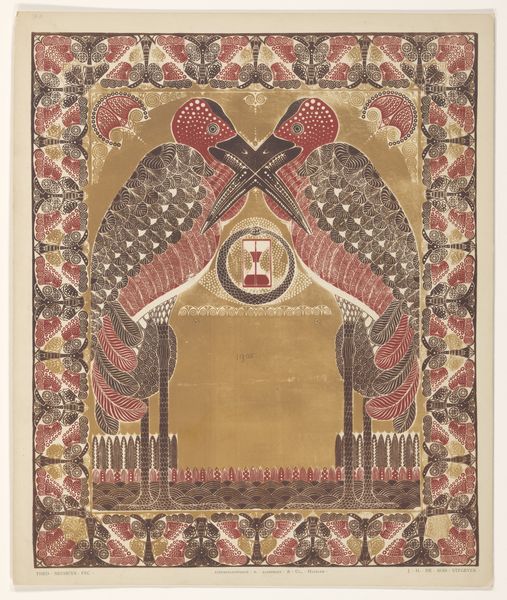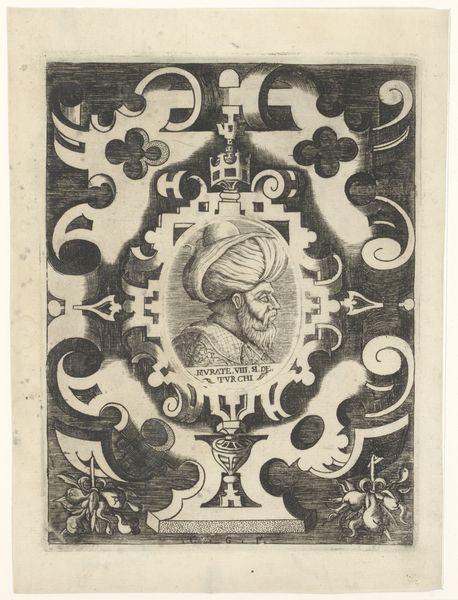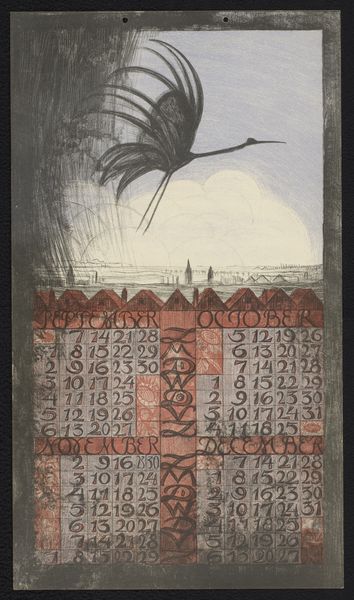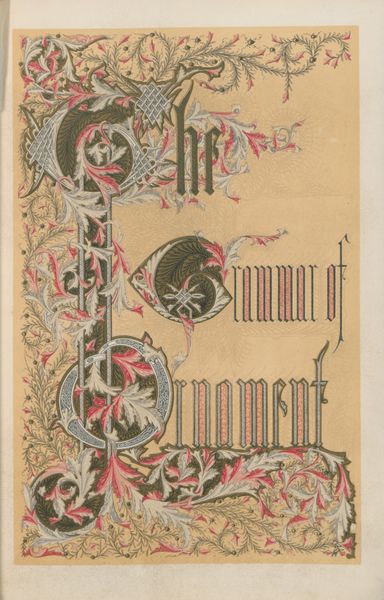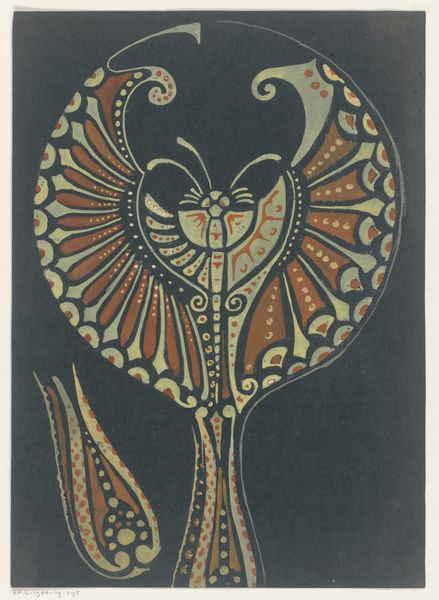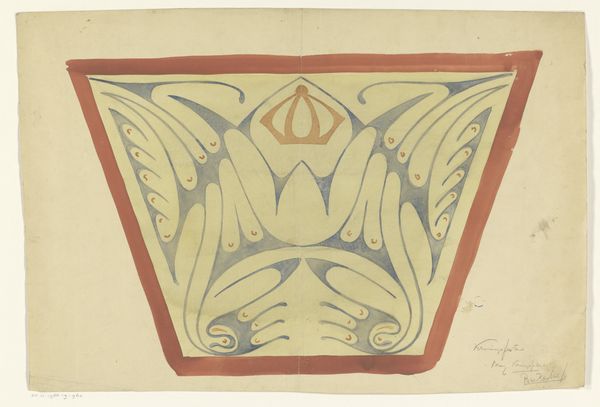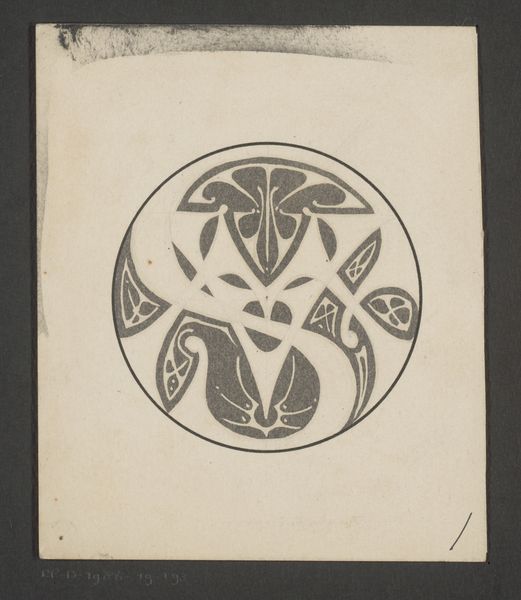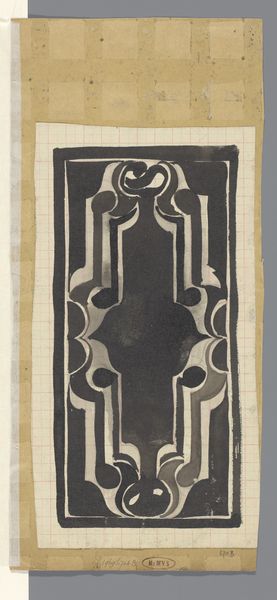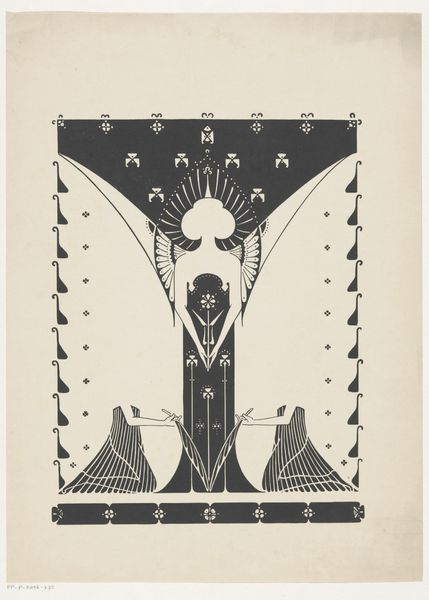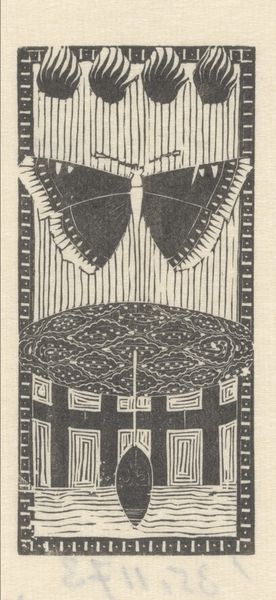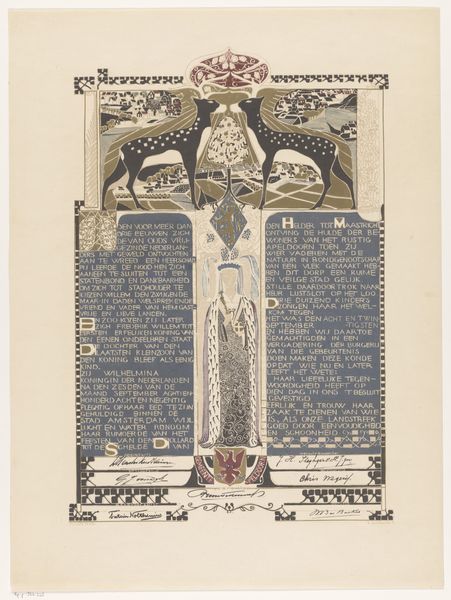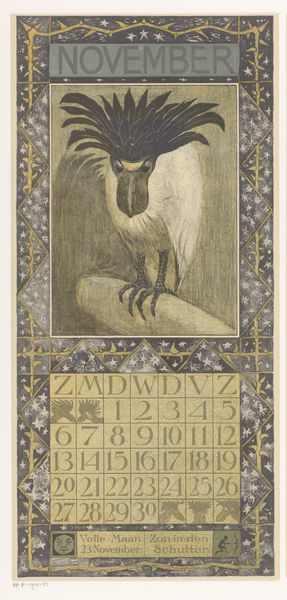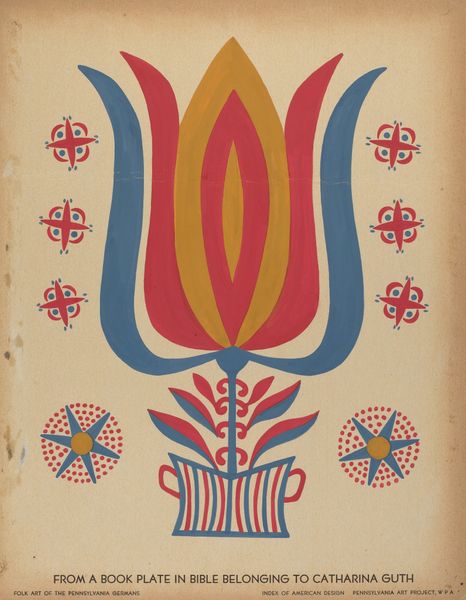
Dimensions: height 477 mm, width 273 mm
Copyright: Rijks Museum: Open Domain
Curator: So, this is "Kalenderblad voor januari tot en met april 1924," a calendar designed by Leo Visser around 1923, primarily using printmaking techniques. The Art Nouveau influences are clear, with the decorative lines and the integration of image and text. Editor: It's fascinating how the image of the bird interacts with those almost gothic dragon-like figures, all surrounding the calendar itself. What draws your attention most about this piece? Curator: I'm intrigued by the deliberate process behind it. Think about the choices in material - the linocut print medium itself implies a certain level of craft and labor, challenging the idea of art as purely intellectual. It wasn't a spontaneous sketch; it required careful planning and execution, a conscious engagement with industrial methods of reproduction for a potentially mass-produced object. Editor: Do you think the intended purpose—as a functional calendar—changes our perception of it as art? Curator: Absolutely. By embedding art into an everyday object, Visser subtly comments on the role of art in society. The calendar format brings art into the domestic sphere, available for daily consumption. Were these affordable? Were they considered disposable after April? How does that contrast with the high art we see preserved in museums? Editor: That makes me consider the tension between its aesthetic appeal and its practical function, particularly because of the clear visual weight on the illustrated part and the very schematic, geometrical, rendering of dates and text. Curator: Exactly! And think about the consumption aspect—how would owning something like this shape one’s daily experience and sense of time? How did it influence interior spaces and visual culture? Editor: Considering that it's Art Nouveau and therefore designed in response to industrialization, do you think the choice of print as a medium to reproduce the design helped reinforce that reaction? Curator: Absolutely! Printmaking facilitated wider distribution but also hinted at the labor involved in creation and distribution. How can we read those themes based on this artifact's material footprint? Editor: That's really insightful. I never considered the piece from the viewpoint of production and consumption, but focusing on the materials and the process definitely enriches my understanding of its role. Curator: Right, and analyzing these dimensions of artistic creation encourages a different kind of valuation for artworks, away from their seeming genius and more towards appreciating them in their socio-economic contexts.
Comments
No comments
Be the first to comment and join the conversation on the ultimate creative platform.
